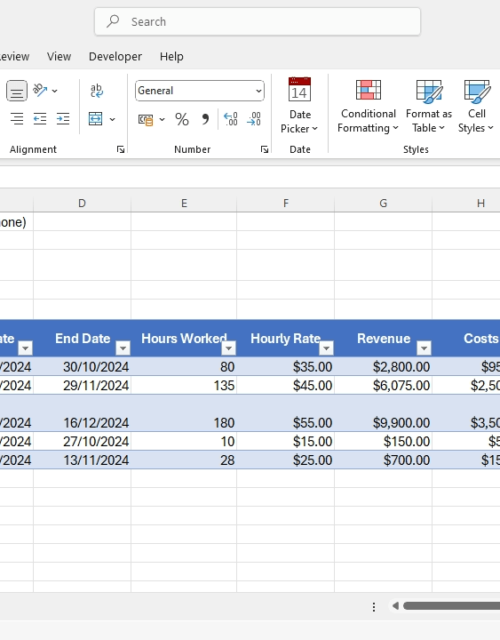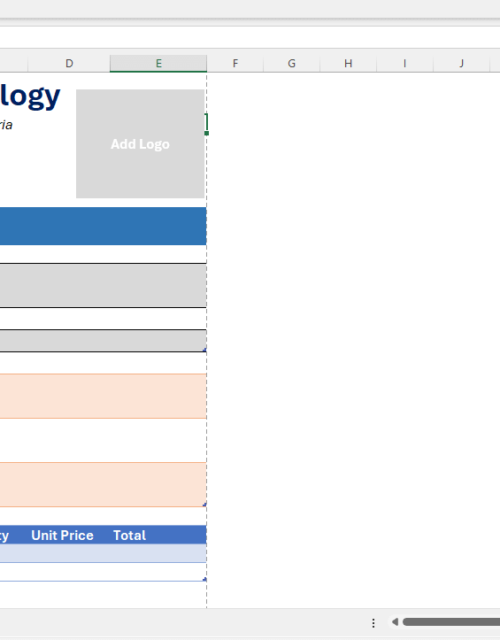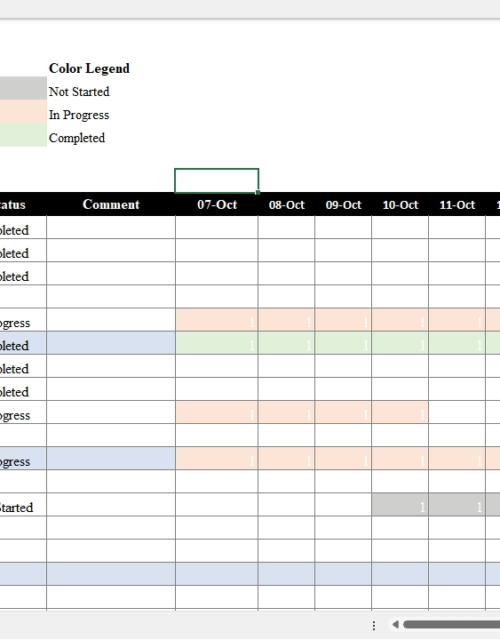How to Host a Website: Small Business Guide to Web Hosting

Have you ever thought of hosting a website for your blog or business but have a small budget? Do you know how to host a website?
If you or your business is in the above category, then you’re in the right place. I’ll take you through the steps on how to host a website for your blog or business.
In this guide, you will learn the following and more:
- Understand web hosting terminology
- Differentiate between types of web hosting services
- How to host a website for your blog or business
- Choose between free web hosting services and paid hosting.
If you are ready to go, keep scrolling.
Table of Contents
Website Hosting Terminology
In this section, we shall define some terms that will help you as a beginner to understand web hosting. You shall learn the definition of a website and how to host a website for free.
What are a website and a webpage?
A website is a collection of pages of information in text and multimedia format publicly accessible through the internet. A website needs an infrastructure where the files would reside for the public to access them. This infrastructure usually is the web hosting server.
Every website has a unique address that points to the domain name or IP address of the website. The website or IP address is used to locate the site on the internet.
Webpages
A webpage is a page on a website. A website is a combination of different web pages including the HOME page, ABOUT US, etc. The content of each of these pages is linked together to make up the website.
Each webpage has a unique address for locating it on the internet. It could contain images and videos, attached to the pages for clarity of understanding to the audience.
Webpages are not mere documents that can be created with a word processor. The following differentiates a webpage from a word document.
- A webpage is usually created with one of the numerous web technologies available, including HTML, CSS, and JS. This means that the file so created must be saved with an HTML, HTM, PHP, etc file extension.
- To view a webpage, one needs a web browser rather than normal word processing, pdf, spreadsheet, etc applications. Some of the popular web browsers include Microsoft Edge, Mozilla Firefox, Chrome, Safari, and Opera.
- The webpage so created would not be saved on your personal computer but on a web server. This web server will host the website. To host a website, you will have to rent a space on a web server from a web hosting provider.
Web servers
Web servers are pieces of software or hardware (or both) that store and distribute content to web browsers. A Web server can be a computer system (hardware) or a virtual machine (software) that keeps your files, images, videos, etc.
The web server keeps or stores your website information and repeatedly makes them available to the public when accessed.
Web servers communicate with browsers using Hypertext Transfer Protocol (HTTP). The web server has the necessary software that allows people to access your content through HTTP, SMTP, and FTP.
Web servers are important, even more, important than the website itself because it contributes to the success of a website. The efficiency of a web server that powers a website determines its success. Some web servers are grossly inefficient, hence, keeping your website perpetually unavailable to the public.
Web servers are connected to the internet 24/7, and have the necessary security measures to secure your files from attack.
As a beginner, to host a website, you must be careful to review the efficiency of different web servers. A website with great content and functionality with an efficient web server will guarantee business success.
What is a Domain name?
A domain name can be simply defined as the name of your website. It is a name that people can use to find you on the internet. Your domain name should be the same or have a relationship with the name of your business or brand.
Domain names are usually associated with Domain Name Systems (DNS). The DNS helps to translate domain names into their associated IP addresses.
To host a website with your brand, you should own a domain. However, to host a website for free, you will compromise your brand name with the hosting provider. This means that the domain will look like this: https://mybrandname.myhostingprovider.com.
Domain names always end with suffixes such as .com, .net, .org, .ng, .info, .biz, .tv, .mobi, .me, .com.ng, .net.ng, .org.ng, .sch.ng, .gov.ng, .edu.ng, etc. The rightmost part of a domain name is usually called a domain extension or Top-Level domain (TLD).
There are different types of TLDs and their prices differ from registrar to registrar. For example, a TLD could be used to represent an institution, the purpose of a website, or its geographical location. Popular types of TLDs include:
- Generic TLDs (gTLDs) – these are the most commonly used domain name extensions. Examples include:
- .com, mostly used for commercial websites
- .org, mostly used for non-for-profit organizations
- .net, created for networking companies, though it’s used by any kind of business these days.
- .tech, mostly used by technology-related companies.
- .store or .shop, created for eCommerce websites
- .name, basically for personal or individual websites.
There are several gTLDs approved by ICANN (Internet Corporation for Assigned Names and Numbers).
- Sponsored TLDs (sTLDs) – these are domain extensions restricted to a given owner. They are not too many, examples include:
- .gov, for government-owned agencies
- .edu, for educational institutions
- .mil, for military and defense institutions.
- Country code TLDs (ccTLDs) – these are country-specific or a geographical area where the web address originates. There are quite a number of them, examples include:
- .ng, for Nigeria
- .us, for the United States
- .gh for Ghana
- .ru, for Russia
- .fr, for France
- .sa, for South Africa
You can choose a domain extension based on the cost, purpose, or location you want to target. Whatever the purpose or reason is that drives your choice, the gTLDs will always satisfy them. Below is a table that lists the popular gTLDs and their respective prices for 1 year.
| gTLDs* | GoDaddy | Only Domains | Namecheap | Blue Host |
| .com | $4.83 | $10.99 | $9.58 | $12.99 |
| .org | $1.99 | $9.99 | $7.48 | $9.99 |
| .net | $14.99 | $12.99 | $10.98 | $18.99 |
| .tech | $9.99 | $4.99 | $8.88 | $4.99 |
| .store | $1.99 | $3.99 | $1.78 | $12.99 |
*Note that the prices are for the first year, prices often differ when domains are renewed. For example, the renewal price for .tech and .store in Namecheap is $34.98 and $24.98 respectively.
Understanding that first-year prices are promotional, you should always review each TLD’s renewal prices.
DNS Server
As stated above, DNS helps to resolve IP addresses to their respective domain names. They do this by memorizing each IP address associated with each domain name. When a user accesses a URL, it will resolve the domain to the IP address and for equivalent output.
DNS servers are used for this IP – domain name resolution. A DNS server is like a web server, but it contains a database of public IP addresses and their associated hostnames.
Its job is to resolve or translate domain names to IP addresses when it is requested. DNS servers run special software and communicate with each other using special protocols.
The DNS resolver receives a client’s DNS query and interacts with other DNS servers to resolve the correct IP address.
What is web hosting?
Web hosting is a service that allows you to upload your website’s files to a web server. The web server in turn makes the files accessible to the public through the internet.
Web hosting provides the technologies necessary to serve web pages over the internet. It is like you buying a space on the internet. Your hosting account is your shop on the internet.
Web hosting companies own servers and the underlying technologies that allow them to store files and serve them to the public. These companies provide 24/7 uptime and security to these website files.
Basic web technologies
To create a dynamic website, web developers utilize different scripting languages.
Web technology is a term used to refer to the different scripting languages used together to produce a dynamic website. These scripting languages provide a communication interface between web servers and client computers.
There are three basic web technologies, namely HTML (HyperText Mark-up Language), JavaScript, and CSS (Cascading Stylesheets). Every web developer should learn and know these technologies.
Apart from the trio, other scripting languages have helped and are helping with web designing and development. Some of them are highlighted below.
HTML (HyperText Markup Language)
This is the basic technology that provides the foundational structure of every website.
CSS (Cascading stylesheets)
This technology works hand in hand with HTML to create a visual presentation of a website. It adds beauty and creates a layout for a website.
JS (JavaScript)
This is a scripting language that is used together with HTML and CSS to create a dynamic and interactive website.
Other Scripting languages
These are programming languages that help to create web applications. Some of them are multipurpose, yet enhance UX/UI design. Examples include Python, Ruby, PHP, Go, CoffeeScript, Java, Swift, and Objective-C.
Web technology frameworks
These are applications that make working with scripting languages easier and make setting up a website faster.
Some of these frameworks are dedicated to front-end web designing or for the backend only. Yet some are used for full-stack (frontend and backend) web designing.
Popularly used frameworks include:
- Bootstrap – A free and open-source CSS framework designed for front-end web development. It has JavaScript, CSS, and HTML design templates and prioritizes mobile responsiveness
- Foundation – A free and open-source responsive front-end framework, that provides a responsive grid and HTML and CSS UI components.
- Meteor – A full-stack open-source JavaScript framework is written in Node.js, It allows you to build and scale web development efficiently so you can serve millions of users.
- Node.js – An open-source, cross-platform JavaScript runtime environment. It is a backend JavaScript framework.
- React – A free and open-source front-end JavaScript library for building user interfaces based on UI components.
- Ruby-on-rails – A full-stack Ruby framework used to build amazing web apps,
- Django – A free and open-source, Python-based web framework that follows the model–template–views architectural pattern.
- WordPress – A Content Management System (CMS) built on PHP, which powers up to 20% of websites.
- JQuery – A JavaScript library that groups code snippets together. It helps to reduce the process of writing entire codes by yourself. jQuery is fast, small, and feature-rich.
- Others include Angular.js, Ember.js, Backbone.js, etc.
Databases
Databases help us to store and manipulate data. There are SQL databases and NoSQL databases. Examples of SQL databases include MySQL, PostgreSQL, Oracle, and SQLServer. An example of a NoSQL is MongoDB.
Free Web Hosting Sites
Web hosting allows you to display your personal or business information to the public. There are known platforms that give you access to publish your content free of charge.
In this section, I will highlight some platforms that you can use to host your content without pay. the only limitation is that you are subject to their rules and regulations.
As long as you can follow the rules, you can start sharing your content. Though there are quite a number of them, you can start with these.
Facebook is an online social media and social networking platform. It gives users access to a Facebook fan page where they can share information with the public.
With a Facebook page, you can create personal and business content, and share and collaborate with friends and the public. This will save you the cost of hosting a website.
- To start, visit www.facebook.com and create an account.
- Login to your Facebook account.
- On your dashboard, on the left pane, select Pages.
- On the window that appears, click on + Create New Page.
- On the create a page window, fill in the necessary information and click on Create Page button.
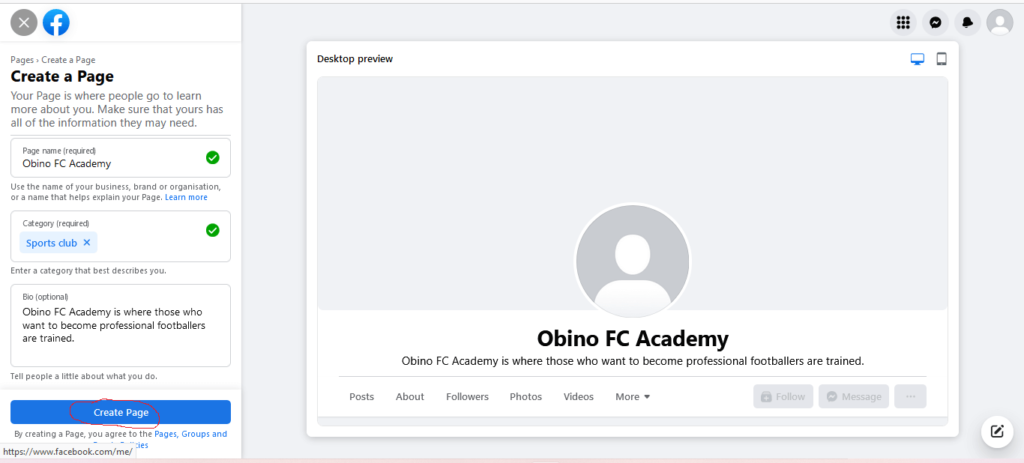
- Your page will be created. Start managing and posting content on your page.
Twitter is a microblogging and social networking site. It allows people to create and share information free of charge. Though it doesn’t give room for large information, you can link your tweets to a broader information-sharing site.
You can track real-time tweets, and organize and engage your Twitter followers easily. Twitter allows you to post text, images, and video content. Most importantly, your tweets can be linked to other platforms.
To start with Twitter, visit https://twitter,com to create a free account.
LinkedIn is a professional platform where you can share business-like and professional information. You can also connect with professionals in your industry on LinkedIn. LinkedIn allows you to create text, images, and video posts.
LinkedIn has a company page where you can share a greater amount of information which tweeter does not permit. Rather than host a website that you’ll pay for yearly, you can create professional information and share them here. You can also link your tweets to your LinkedIn content.
- To start using LinkedIn, visit the LinkedIn platform and register.
- Log in to your LinkedIn account.
- On your dashboard, on the Work menu list, select Create a Company Page +.
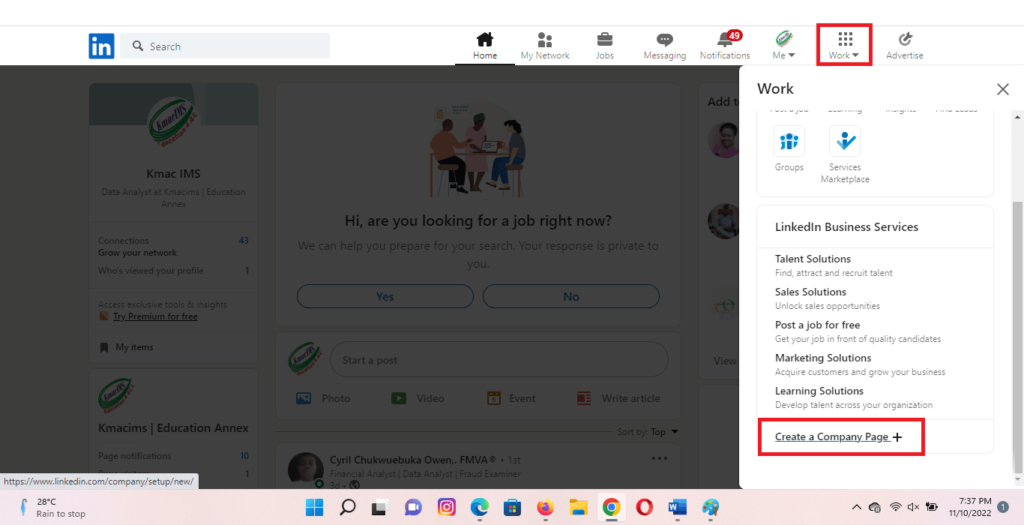
- On the Create a LinkedIn Page window that appears, select a page type: Company, Showcase pages, and Educational Institution. Choose company.

- On the window that follows, fill in the necessary information and click on the Create page button.
- Your page will be created. Start managing and posting content on your page.
Flickr, and Instagram
Flickr is an online community where you can host images and videos. With Flickr, you can share your images and videos with the world.
Instagram is a photo and video-sharing social networking service owned by Meta Platforms. It provides a simple, fun & creative way to capture, edit & share photos, videos, and messages with friends.
Vimeo, YouTube, Dailymotion
These are platforms where you can share videos with the world free of charge. Start by vising any of the platforms, especially, YouTube. Other video-sharing sites you can try include TikTok, Snapchat, WeChat, etc.
Free blogging websites
There are different blogging websites you can use to create content for free. These platforms provide free web hosting for you, while you share your content online. However, your website will be a subdomain to the free web hosting sites you choose. This means that your brand will be prefixed with the platform’s name.
Some of these websites include Tumblr, Medium, WordPress, Blogger, Wix, Penzu.com, Webs.com, and Svbtle.com.
Create and host a website in Blogger
To create and host a website in Blogger do the following.
- Visit Blogger website @ Blogger.com
- Click on Create Your Blog button (You should have a Google account. If you don’t have to create one)
- Log in with your Google account to continue
- On the page that appears, type a name for your website, that is your website title, and click Next.
- On the Next window choose a URL (i.e. website address or domain name) for your website. If the address is not available, you’ll be notified. The address will be in the form, mywebaddress.blogspot.com. Click on Next to continue. NOTE: This is the address people will use to find your website on the internet.
- In the last step, type a name that will be shown to your audience. This should be your brand name or product/service offering. When done, click on the Finish button.
- Your website will be created in seconds, and you’ll be logged in to the dashboard.
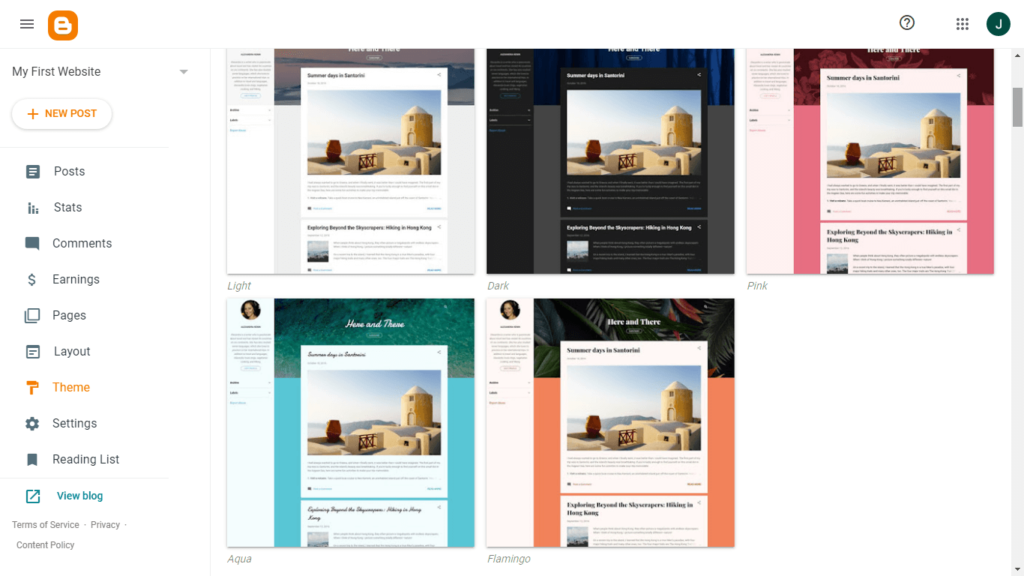
- On the left pane, select Theme, to choose a theme for your website. Perform other customizations based on your knowledge.
- Start posting content by clicking on the + New Post button. When done, publish your post. You have created and hosted a website for free.
Create and host a website on Wix
Wix allows you to create and host a website free of charge. But to use your domain name or brand, you’ll upgrade to a premium plan.
To create and host a website using Wix free hosting, do the following:
- Go to the Wix website.
- On the Wix home page, click on the Get Started button.
- On the sign-up page, enter your email address and password, and click on Sign Up.
- On the next page that appears, click on the Get Started button to answer questions relating to your site. Questions like: the type of website, the name, etc.
- On the page “What are your goals for this website?” Select all options that apply, e.g. sell products, offer services, etc.
- On the page, What do you want to add to your website? Select all options you think matter for your site, see the image below. Click Next to continue.

- On the next window, click on Go to Dashboard button to start customizing your website and posting content. Meanwhile, remember to confirm your email address before continuing with your site customization.
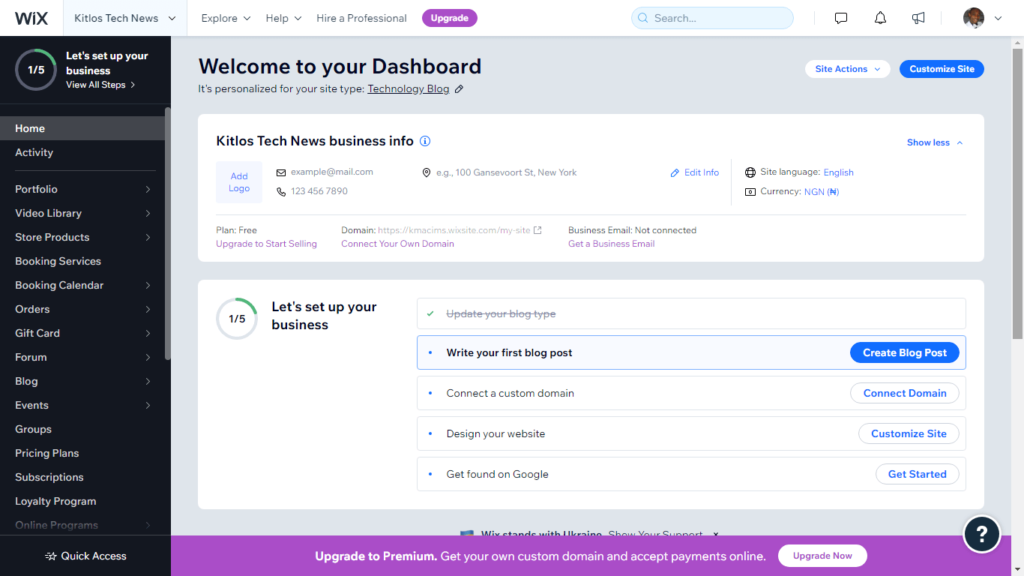
- On the dashboard, customize, create content for your website and publish for the public.
Haven explored how to create and host a website with free web hosting sites, let’s look at actual hosting.
How to host a website for free
Apart from using the above free web hosting sites, other sites offer free web hosting and domain.
Remember that with the above free web hosting sites, you cannot connect a custom domain. To do so, you will need a premium plan. However, the websites listed below offer completely free web hosting with your custom domain.
Before jumping up and accepting their hosting service, note that such hosting comes with limitations. For example,
- There’ll be quite limited storage for your files
- There’ll be a very limited monthly bandwidth and allowable traffic
- There may be no email account, where this is allowed, it’ll be limited
- They can show ads on your website as a means of making money for themselves
- They can also make it difficult to move your website to other platforms unless you subscribe
- There’ll always be a limitation to growing your website in one way or the other.
My experience using this kind of website revealed that they can inflate your data storage beyond normal. This they do to push you to subscribe to one of their hosting services,
The good side is that you can start from here as a beginner. When your website visitors begin to grow, you can purchase a hosting plan. Also, you can test-run the hosting platform using the free plan.
Some of the website hosting companies offer 100% custom domains:
- FreeSiteHosting – this website offers 100% free hosting with your branded domain.
- Hostinger – this website gives you the choice of free web hosting with limitations.
- free hosting – this site offers 100% free lifetime hosting, mostly for lightweight websites.
- infinity free – free web hosting with 99.9% uptime.
- GrandHost – at hyperphp offers free hosting for personal websites.
You can choose any of the above websites or explore all of them and make your choice.
Host a website for free
Let us illustrate with free hosting. To continue, do the following:
- Visit FreeHosting website
- On the homepage, click on the Sign-Up or Sign Up for Free button.
- On the page that appears, choose a domain. If already have a domain name choose, “I will use my existing domain and update my nameservers”. If you have non, choose Register a new domain. I already have a domain. Select this option and enter the domain name. then click the Use button.
- On the order window, select Continue. Do not select any add-on, or else you’ll pay for any add-on selected.

- On the checkout window, select Checkout, and fill out the checkout form. Complete the order and visit the client area to start hosting your website.
I’ll advise you to come back to this section if you choose to go on with free hosting. Meanwhile, let’s look at how to host a website in detail.
How to Host a Website for your business
There are two major options to host a business website if you have the required budget. They include:
- Choosing to host your website with your local infrastructure. This option requires you to provide the computer system, software, security, power supply, and uninterruptible internet connection. Looking at this option, small businesses will not be able to afford it. Hence, we’ll not cover this option in this guide.
- Choosing to host your website with a website hosting company. I’ll discuss this option in detail.
Steps to follow when hosting a website
To host your business website or blog with a web hosting service provider, follow these steps.
- Review available web hosting companies
- Choose a domain name for your business or brand
- Choose a web hosting service plan
- Change name servers if your hosting service provider is different from your domain registrar.
- Upload your website files, or install a CMS or website builder and create your website.
Let’s look at each of these steps in detail.
Review available web hosting service providers
Hosting a website requires a lot of technicalities and resources that small businesses cannot afford. Even large organizations outsource such services to minimize costs.
Luckily, there are lots of website hosting companies in your country and around the world. For example, in Nigeria, popular web hosting companies include:
- Smartweb
- Qservers
- HostNowNow
- WhogoHost
- DomainKing, etc
Similarly, there are hosting companies all over the world including Bluehost, Namecheap, GoDaddy, etc.
Before you choose a hosting company for your website, there are things to consider for efficient service delivery. My take is for you to review each hosting service offer, not necessarily the price, before making a choice.
Some websites constantly review web hosting services based on customers’ reviews. Locate any of them using keywords like top web hosting, or best web hosting companies.
When you review web hosting companies, be on the lookout for the following service offering.

Web hosting service offering
- Price – this is a very important factor because you have a limited budget. Hence, while considering other service features, work within your budget.
- Uptime – many companies guarantee an uptime of up to 99.99%. Yet many have lower uptime. Generally, lookout for at least 99.5% uptime. What is said or written on the website does not count. That is why a review is important: what are the present customers saying about the hosting company?
- Bandwidth – This feature is very important because it affects traffic and resource accessibility. Many host companies offer unlimited bandwidth, yet some specify bandwidth depending on the hosting plan.
- Disk space – This affects the amount of content you can store on the server. The size of disk space required depends on the type of content you’ll be sharing. If your content will be mostly videos, then, consider a higher disk space.
- SSL certificate – This helps you secure your website. Some offer free SSL in your first year. Because it is important to protect your visitors’ information, always look out for SSL.
- Customer Service – Look for a hosting company that offers 24/7 support with a fast response time. You can get support through chat, ticket, or telephone service.
There are many features associated with web hosting including, databases, backup, domain offerings, etc. Your budget and the purpose of your website will determine the best features for your website.
After you have reviewed web hosting companies, it’s time to get your domain name.
How to register a domain name
Note that many hosting companies offer 1-year free domain name registration for first-timers. But be careful to check the renewal fee before proceeding. If it is worth it, then go for the free domain name registration.
Whether you are using the free domain from your hosting company or not, follow these steps to register a domain.
- Visit your preferred domain name registrar. I will illustrate it with GoDaddy, I also recommend it for all your domain names. This is because they offer relatively cheap domain names.
- On the home page, enter your preferred domain name in the Search Domain text box. Click on the Search Domain button.
- The search result appears with available TLDs.
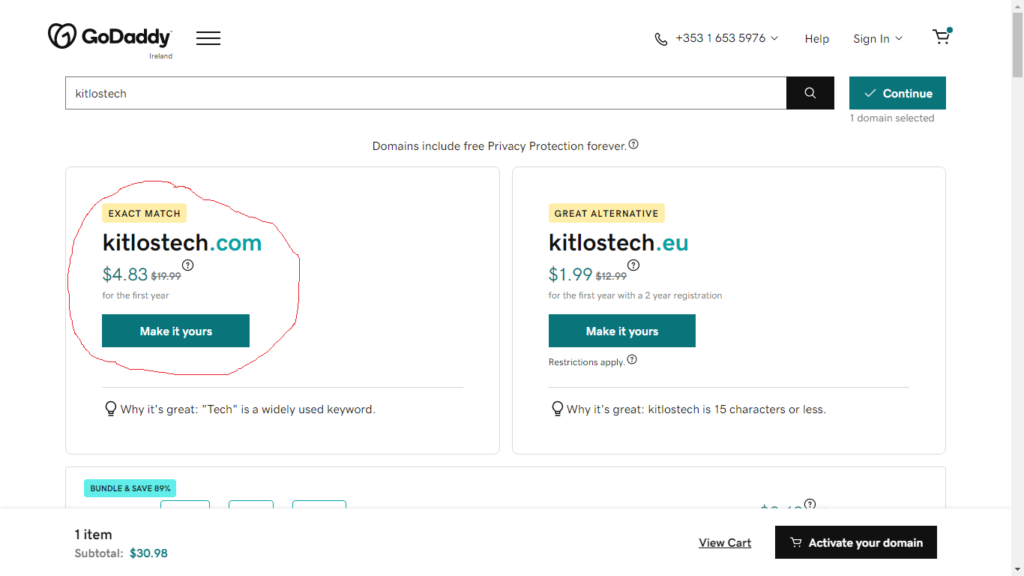
- On the result page, select the domain name you want. Note that different domain extensions have different prices. I’ll select the .com TLD. Hence, click on the Make it your button.
- If you want to choose .org, scroll down and click on the cart icon next to your preferred TLD.
- On the create account page, create a GoDaddy account and log in to the account to view your cart.
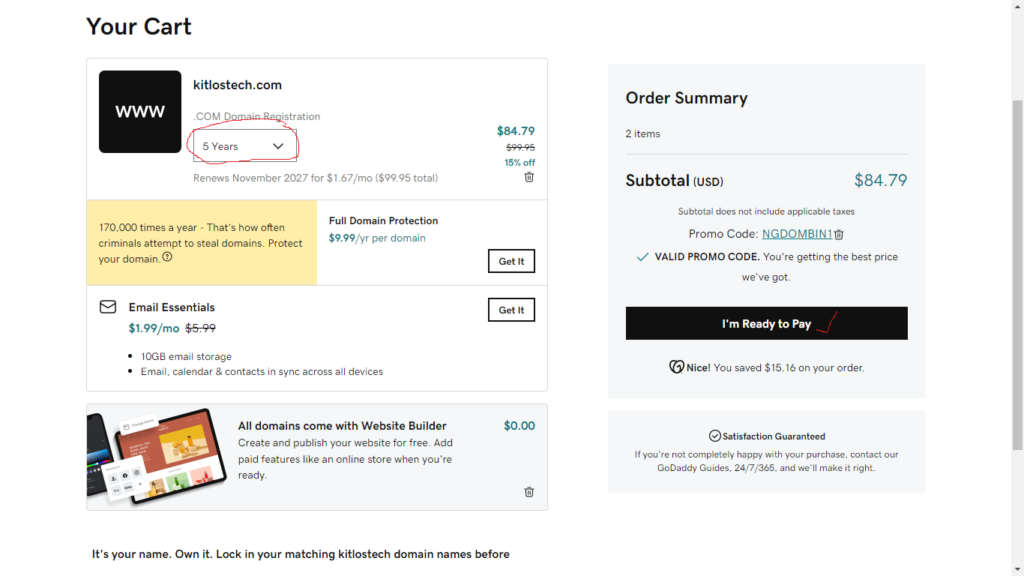
- On your Cart, make sure you go through the selected items one after the other. Remove the add-ons you do not need, e.g. professional email, domain security, etc. Also, change the number of years you are paying to one year.
- When all is done, select the I’m Ready to Pay button.
- On the checkout page, fill in your personal information, and choose your preferred payment method. You can use a card payment method. Fill in your card detail and pay for the domain.
- After a successful payment, you can log in to the GoDaddy client area and manage your domain.
You have successfully registered a domain for your business or blog. Note, if you are using a hosting company that offers a free domain, then the above procedure is not necessary.
Choose a Type of web hosting service plan
There are different types of web hosting service plans offered by different hosting companies. I will not be able to discuss all the plans in detail, but I will highlight each of them.
The purpose of understanding the types is that all websites are not the same. New personal and small business websites usually have low traffic and use fewer resources. But large organizations maintain websites with high traffic that requires more resources.
Each type of web hosting service is meant to address the specific needs of users. Also, they have their advantages and disadvantages as the case may be. Popular among them include:
- Shared web hosting
- Managed WordPress hosting
- VPS (Virtual Private Server) hosting
- Dedicated web hosting
- Cloud web hosting
- Reseller hosting is usually for those who want to sublet their hosting service.
Shared website hosting service
Shared Hosting defines a service that allows more than one customer to share a web server’s resources. More than one customer is allowed to use one physical server. So, they share the CPU, RAM, disk space, bandwidth, etc. of the system.
This type of hosting is suitable for personal blogs, small businesses, and small organizations. It is meant for starters who do not consume many resources.
As a result, it is highly affordable. Instead of you paying for a web server, you share the payment with other small businesses like yours.

There are also different plans based on resources made available to customers. Bluehost shared hosting plans start at $2.95 per month.
Managed WordPress hosting
This is a specialized hosting service for those using WordPress to create websites. It makes managing WordPress sites easy with features like quick installation, backups, caching, security and updates.
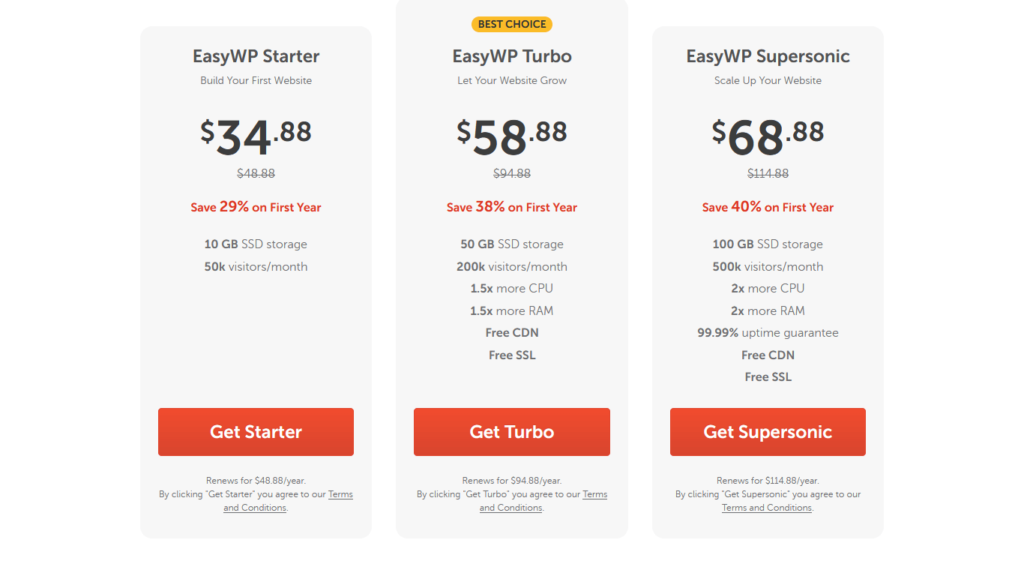
With this service, you’ll concentrate on creating the content for your website. This type of service is relatively more expensive than a shared web hosting service. The Namecheap plan starts at 34.88 per year.
VPS hosting
This is an advanced form of shared web hosting, but with flexible resources to manage high traffic. You can see it as a dedicated server in a shared hosting environment.
Here, the hosting company will run separate virtual operating systems on the same server for each customer. By this, each business will own an operating system, yet share the server with other businesses.

This type of hosting service gives a business the benefit of a dedicated server at a shared price. Prices are higher compared to shared hosting, yet relatively lower compared to dedicated hosting. Bluehost prices start at $19.99.
Dedicated hosting
This type of hosting requires that you rent a server for your business. You don’t share the server or its resources with others. This service is more expensive and requires server management expertise. It is best suited for big companies and businesses.
Cloud hosting
This type of hosting is generally not common to all hosting companies but promises excellent hosting speed. It works exactly like VPS hosting but has additional benefits.
In cloud hosting, multiple websites are shared in multiple servers around the world to create redundancy. Such redundancy improves data security and reliability.
Compare Hosting Plans
Haven considered the types of hosting, let’s compare the prices of these hosting services. This will allow you to make a quick choice. I specified the prices for the lowest possible plans.
| Type of hosting* | GoDaddy | Inmotion Hosting | Namecheap | Blue Host |
| Shared | $3.99 | $3.29 | $2.18 | $2.95 |
| WordPress | $8.99 | $2.99 | $2.91 | $19.95 |
| VPS | $4.99 | $24.99 | $6.88 | $19.99 |
| Dedicated | $129.99 | $139.99 | $48.88 | $79.99 |
*Prices are on monthly basis. Always compare the service offering before making a purchase. The prices are for Linux hosting, you can check prices for windows hosting at each website.
Remember, pricing should not be primary in determining a hosting company, but the level of support, speed, and uptime. This is why Bluehost is the choice of many.
Purchase a hosting service
We shall use Bluehost to illustrate. To purchase a website, follow the procedure below, but there may be some differences based on the host company.
- Go to the Bluehost website.
- On the Home page, select Hosting, then Shared Hosting from the list.
- Select one of the shared hosting plans. Let’s select the Basic plan.
- On the page that appears, choose a domain for your website. NOTE that Bluehost offers a free domain name for one year. Enter a name for your domain and click Next.
- If the domain name is available, then create your account page will appear. Fill out the form appropriately. Make sure to deselect some options that you do not need.
- Enter your credit card information and click on the submit button.
- Complete the checkout and your domain and hosting account will be created.
- Login to the client’s area to manage your domain and hosting.
Change name servers
If your domain registrar is different from your website hosting company, then, you’ll need to change your name servers.
When you register your domain, the registrars will point your domain to their name servers. If you eventually purchase hosting from them, you do not need to do anything at all.
However, if your web hosting is with another company, then the name servers provided by your registrar will be invalid. Because the name servers will point to the wrong IP address.
To correct this anomaly, you will obtain the name servers of your hosting company. Then visit your domain registrar’s client area and change them accordingly.
To change name servers, do the following.
- Contact your hosting company and request their servers’ addresses if you don’t have them already.
- Go to your domain registrar’s website and log in to your account with your account detail.
- On the dashboard, locate Domains, and from the dropdown menu, select My Domains.
- On the My Domains window, depending on the company, you will see, manage nameservers, etc.
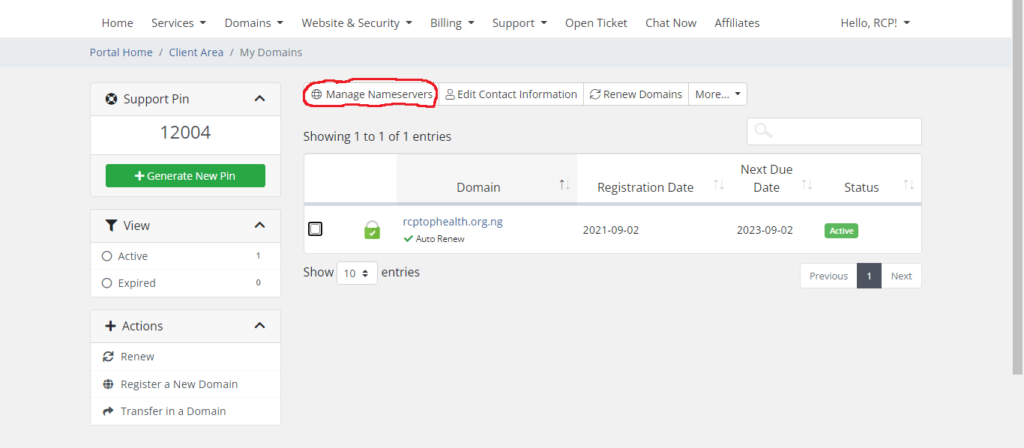
- Select the domain you want to change its name servers and click on Manage Nameservers.
- You can also click the dropdown arrow next to your domain (under Actions), and select Manage Nameservers.
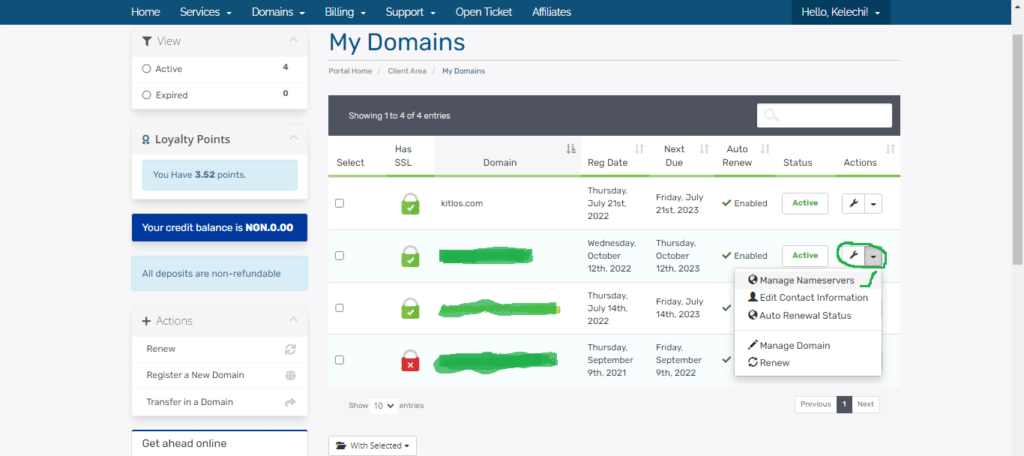
- On the window that appears, select the use custom nameservers radio button.
- Delete the default nameservers for each entry and replace them with the one issued by your hosting company.
- Click the Change Nameservers button. The change is done.
Now that you have changed your nameservers, it’s time to upload your website files. This will take us to the last step.
Upload your website files
If you have finished your website design, you can upload the files to the hosting server. If you choose to design with a website builder, then skip this section.
Upload website files using FTP client software
When you paid for your website hosting, your hosting company will send to you your CPanel login credentials. Included also are the FTP credentials. We’ll use the FTP login detail to upload website files to the server.
To begin, you will need an FTP client such as Filezilla or WinSCP. So, follow this step to upload your website files.
- Download and install Filezilla client software on your computer.
- Open Filezilla on your computer and fill in your FTP credentials as follow:
- Host – enter your host IP address
- Username – enter your FTP username
- Password – enter your FTP password
- Port – 21 (automatically resolves to 21 for FTP, and 22 for SFTP).
- Click the Quickconnect button. If your credentials are valid, you will be connected to your host server.
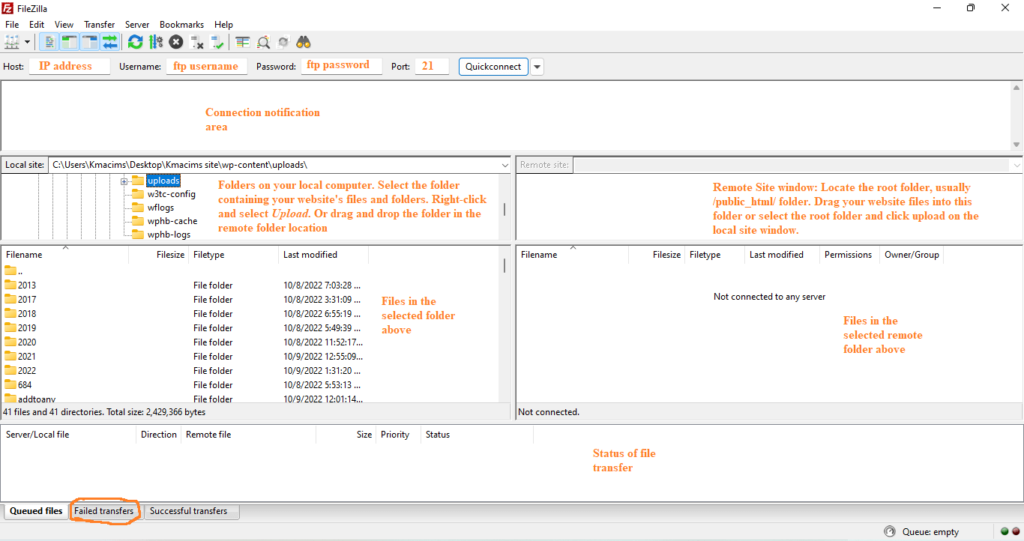
- On the Remote Site window, select the root folder. This is usually the /public_html/ folder. As a new site, it should be empty.
- On the Local Sitewindow, select the folder containing your website files. Either right-click the folder and click on Upload, or drag and drop the folder into the root folder.
- The transfer will begin. Depending on your internet speed, and file size the transfer may take minutes to hours.
- Monitor the transfer to see failed transfer files. If there are failed transfers, re-queue and upload them until all files are successfully transferred.
If everything went well, your website will now be available to the public. Check it out by entering your website URL in a web browser.
Install website builder
If you want to use a website builder provided by your website hosting company or CMS, do the following.
- Log in to your control panel with the credentials provided by your web hosting company.
- Locate your host company’s website builder tool. Install it and start creating your website.
- To use CMS, scroll down to the Softaculous area and choose your desired CMS software. You can choose any of WordPress, Drupal, Joomla, etc.
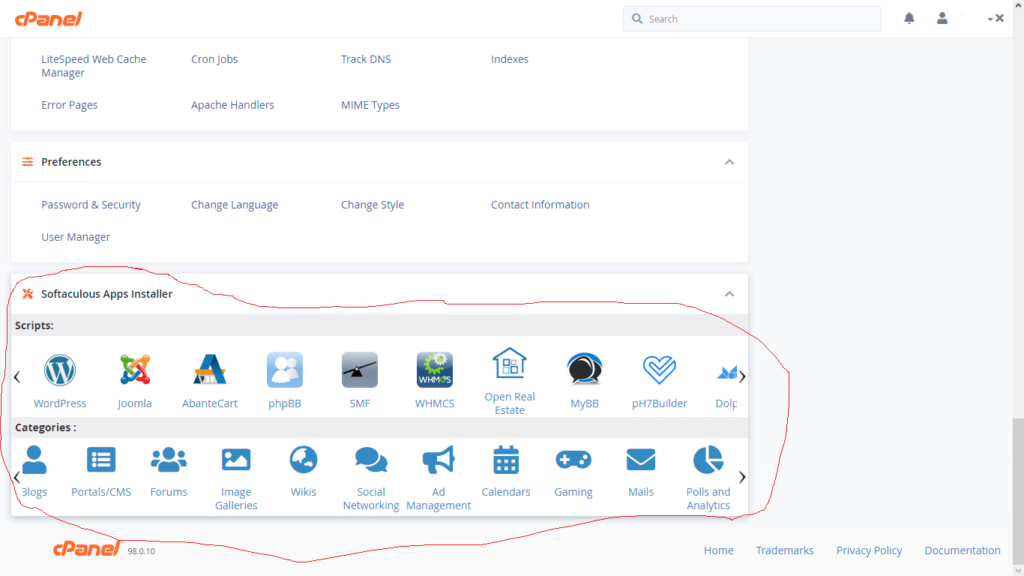
- On the page that appears, click Quick Install or Custom Install to install the software. Note: CMS requires a database, so, if your hosting does not have a database, you cannot use it. Use custom install if you know what to do, else, use quick install.

- If you chose custom install, on the installation window, select your preferred protocol, domain, and directory.
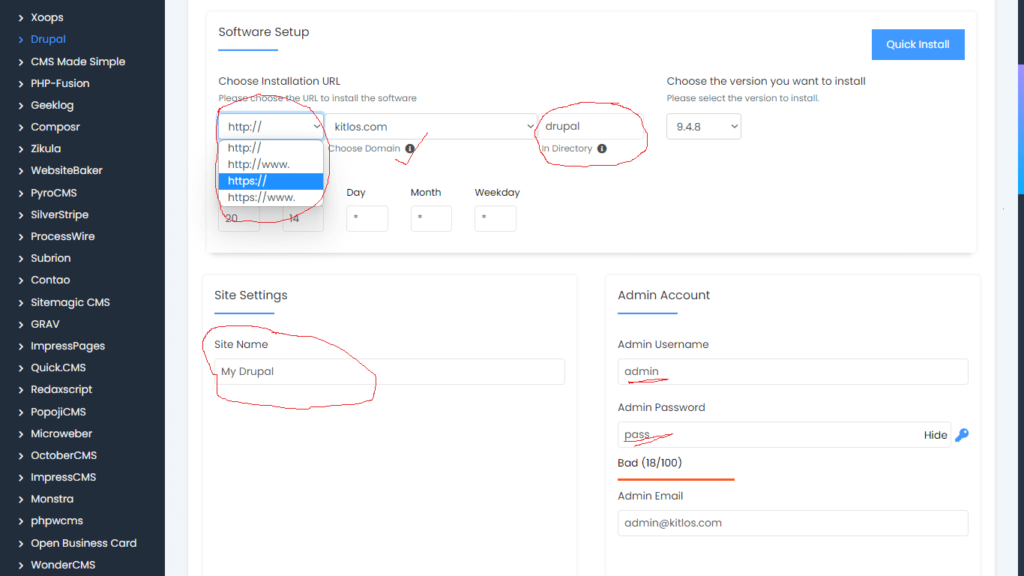
- To install directly to the root directory, leave the in directory textbox empty.
- Enter a name for your site, and choose your login username and password.
- When you are done with the installation information, click Install.
- After the installation, you will see your website URL and CMS dashboard URL. Visit the CMS URL, log in and start designing your website.
After the installation, your website will have the content of the default CMS theme. Endeavor to change it quickly or use under construction theme during installation.
Conclusion
Individuals and small businesses can choose to design and host their websites using a web hosting company.
If you choose to do so, this guide will help you to resolve the technicality involved in web hosting.
Now, I’ll like to hear from you: what did you find confusing throughout this guide? Which hosting company would you prefer from the list given? Or do have already have a hosting company, not on the list? Or, what is your suggestion or advice to the readers?
Whatever your questions and suggestions may be, please, kindly let me know by leaving a comment below.



